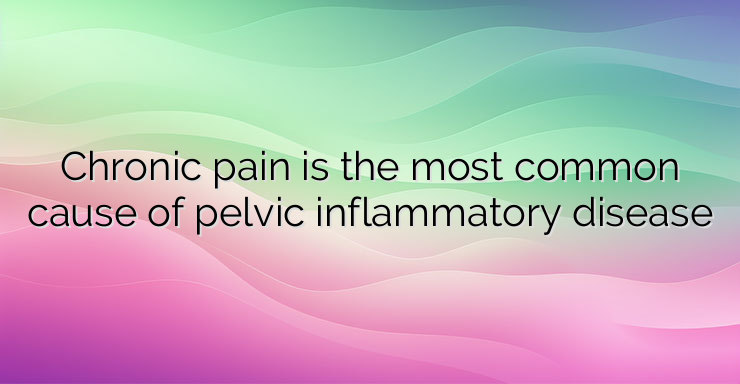Pelvic inflammatory disease is a serious infection in the uterus, fallopian tubes and/or ovaries. It affects women between the ages of 15 and 25. The infection develops in an ascending way from the vagina to the reproductive organs. Bacteria from untreated sexually transmitted infections are the most common cause of pelvic inflammatory disease. Severe pelvic inflammatory disease can cause permanent damage to the reproductive organs and affect fertility. Testing and treatment for sexually transmitted infections is the best way to prevent pelvic inflammatory disease. Every year more than 1 million women in Europe suffer from pelvic inflammatory disease. And more than 100,000 of them become infertile because of it. The symptoms of the disease can be mild or unnoticeable. But they can also start suddenly. These may include: Pain or tenderness in the stomach or lower abdomen is the most common symptom; Abnormal vaginal discharge, usually yellow or green in color with a foul smell; Chills or fever; Nausea and vomiting; Pain during intercourse; Dysuric disorders; Irregular menstrual periods or spotting, h or cramping throughout the month. Pain from pelvic inflammatory disease is mainly felt in the lower abdomen or pelvic area. It can feel like a dull, constant pain. It can also be felt deep in the pelvis during intercourse. Bacteria that enter the reproductive tract cause pelvic inflammatory disease. These bacteria travel from the vagina through the cervix and up into the uterus, fallopian tubes and ovaries. Normally, when bacteria enter the vagina, the cervix prevents them from spreading deeper into other reproductive organs. However, any type of infection can disrupt the cervical defenses. Many types of bacteria can cause pelvic inflammatory disease, but the two most common infections that lead to the disease are gonorrhea and chlamydia. Both infections are transmitted through unprotected intercourse. These two sexually transmitted infections cause about 90% of all cases of pelvic inflammatory disease. Less commonly, the disease develops when normal bacteria inhabiting the vagina enter the reproductive organs by ascending route. This can happen after: Birth; Operative intervention in the pelvis; Abortion; Placement of intrauterine pessaries. The risk is highest within a few weeks of insertion. It can take a few days to a few weeks for the disease to develop if the cause is an untreated gonorrhea or chlamydia infection. Some women are at higher risk of pelvic inflammatory disease if: There is evidence of a sexually transmitted infection, especially gonorrhea or chlamydia. There are data on many sexual partners. There is a history of pelvic inflammatory disease in the past. The longer a reproductive tract infection goes untreated, thethe more serious the complications can become. The infection can cause connective tissue to form in the fallopian tubes. Scarring can lead to several problems, including: Chronic pelvic pain. Prolonged pelvic pain is the most common complication. One study estimates that about 20% of women develop chronic pelvic pain. Ectopic pregnancy. Scarring can prevent the fertilized egg from being transported to the uterus. This can lead to implantation in the fallopian tubes. The rate of ectopic pregnancy in women with pelvic inflammatory disease is much higher. Infertility. Up to 10% of women with pelvic inflammatory disease lose their ability to conceive because connective tissue blocks the fallopian tubes and prevents the release of an egg from the ovaries. Tubo-ovarian abscess, a pocket of infection in the pelvis that can be life-threatening. References: 1. Centers for Disease Control and Prevention. Pelvic Inflammatory Disease (PID): Basic Fact Sheet (https://www.cdc.gov/std/pid/stdfact-pid.htm). 2. Jennings LK, Krywko DM. Pelvic Inflammatory Disease (https://www.ncbi.nlm.nih.gov/books/NBK499959/). 2022 Jun 5. In: StatPearls [Internet]. Treasure Island, FL: StatPearls. 3. Planned Parenthood. Pelvic Inflammatory Disease (PID) (https://www.plannedparenthood.org/learn/health-and-wellness/pelvic-inflammatory-disease-pid). 4. The American College of Obstetricians and Gynecologists. Pelvic Inflammatory Disease (PID). (https://www.acog.org/womens-health/faqs/pelvic-inflammatory-disease)Pelvic Inflammatory Disease (PID). (https://www.acog.org/womens-health/faqs/pelvic-inflammatory-disease)Pelvic Inflammatory Disease (PID). (https://www.acog.org/womens-health/faqs/pelvic-inflammatory-disease)


Leave a Reply